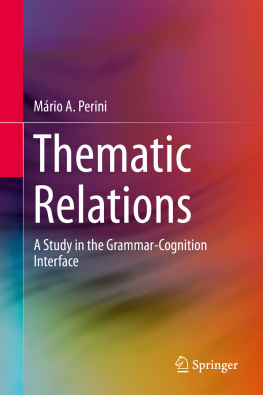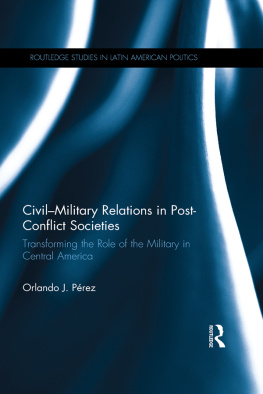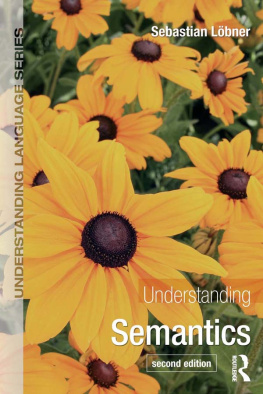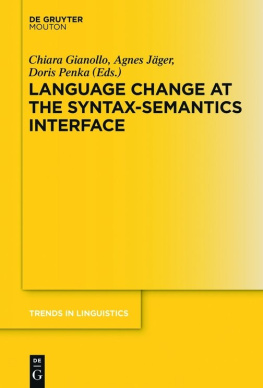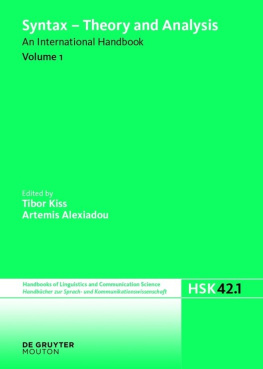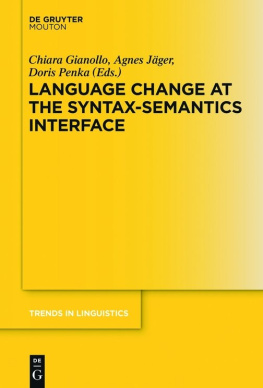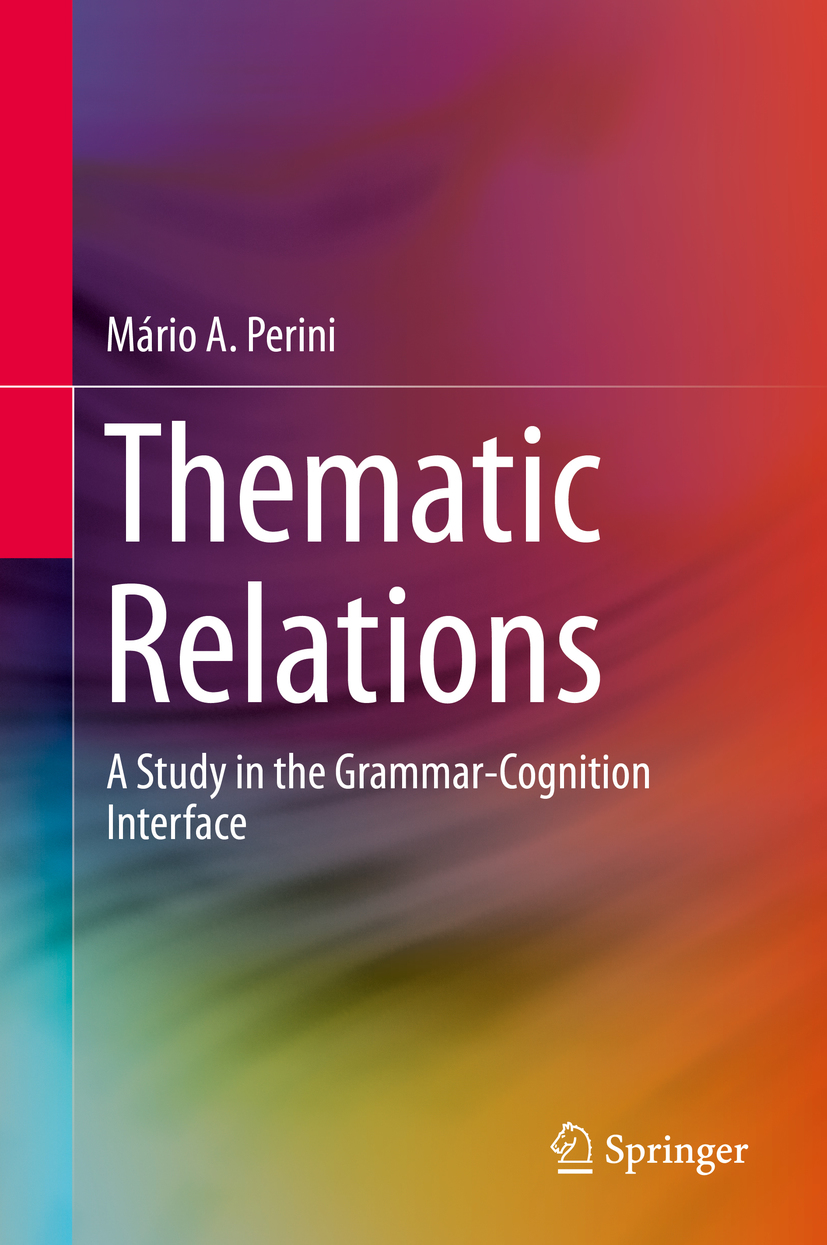Mrio A. Perini
Universidade Federal de Minas Gerais, Belo Horizonte, Minas Gerais, Brazil
ISBN 978-3-030-28537-1 e-ISBN 978-3-030-28538-8
https://doi.org/10.1007/978-3-030-28538-8
Springer Nature Switzerland AG 2019
This work is subject to copyright. All rights are reserved by the Publisher, whether the whole or part of the material is concerned, specifically the rights of translation, reprinting, reuse of illustrations, recitation, broadcasting, reproduction on microfilms or in any other physical way, and transmission or information storage and retrieval, electronic adaptation, computer software, or by similar or dissimilar methodology now known or hereafter developed.
The use of general descriptive names, registered names, trademarks, service marks, etc. in this publication does not imply, even in the absence of a specific statement, that such names are exempt from the relevant protective laws and regulations and therefore free for general use.
The publisher, the authors, and the editors are safe to assume that the advice and information in this book are believed to be true and accurate at the date of publication. Neither the publisher nor the authors or the editors give a warranty, express or implied, with respect to the material contained herein or for any errors or omissions that may have been made. The publisher remains neutral with regard to jurisdictional claims in published maps and institutional affiliations.
This Springer imprint is published by the registered company Springer Nature Switzerland AG
The registered company address is: Gewerbestrasse 11, 6330 Cham, Switzerland
Preface
This book grew out of questions that arose during the construction of the Valency dictionary of Brazilian Portuguese verbs , and from my previous work on the topic, since about 2005. In a previous book (Perini 2015), I deal with basic theory and practical questions of analysis; the present one takes these practical questions a step ahead, adding a number of new examples, and also touches on more general questions, which extend to lexicogrammatical analysis in a wider sense.
The reader may find that my text rambles over several theoretical problems, but these problems are actually connected with the general aim of making the relation between form and meaning explicit, and describing it in such a way as to reach the two extreme points of the process, namely phonetic form and meaning structure, both of which are accessible to observation, sensorially and introspectively. I argue that the introspective component is just as concrete and observable as the phonetic one; in this, I follow methodologically concerned authors such as Itkonen (1974) and Talmy (2007), as well as most linguists working on the analysis of particular languages, who sometimes do not acknowledge their debt to introspective observation, but make use of it just the same. Introspection is the only way to access meaning, and describing in clear and complete terms the relation between form and meaning is an inevitable task of linguistics; it is derived directly from the definition of a language as a system relating these two spaces. I hope I am sufficiently clear about these important points in this book.
This book is not, nor does it include, an exhaustive review of the literature on thematic relations and related topics. It is thought of primarily as a set of questions and proposals meant to help people working in an area of language structure which I feel to be insufficiently understood, as far as the descriptive quality of the proposals is concerned, namely the semantic and cognitive relations between the constituents of a sentence. Accordingly, reference is made to work directly connected with the point under discussion at the moment, and criticism is directed at its empirical import, in preference to their eventual theoretical claims. The emphasis is on description, rather than theory-building; but this does not exclude theoretical argumentation since there is nothing simple about linguistic description.
During the elaboration of the book, and for a long time before that, I benefitted from contributions, discussions, and informal talks with several colleagues. Lcia Fulgncio, my best reader, was very useful by unwearyingly insisting on certain points which I resisted for some time, only to recognize them as basic later on. I am also grateful to my colleagues at the VVP Project, who contributed examples, criticisms, and suggestions: Marcella Couto, Larissa Ciraco, Eliane Mouro, Madalena Loredo Neta, and Polyana Plais. Our weekly meetings were more important than even they probably realize. Jos Garca-Miguel, Oliver Gobbo, Heliana Melo, and Gabriel Othero made useful remarks on specific points. My most heartfelt thanks to all of them. The final result, of course, is my own, and I take full responsibility for the conclusions arrived at.
I extend my gratitude to CNPq (an agency of the Brazilian Ministry of Science and Technology) for a research grant during the writing of this book and to UFMG, where I have been a welcome guest as a volunteer and professor emeritus.
References
Itkonen, E. (1974) Linguistics and metascience . Kokemki: Societas Philosophica et Phaenomenologica Finlandiae.
Perini, M. A. (2015). Describing verb valencies: Practical and theoretical issues . Cham: Springer.
Talmy, L. (2007). Foreword. In M. Gonzlez-Mrquez, I. Mittelberg, S. Coulson, & M. J. Spivey (Eds.), Methods in cognitive linguistics . Amsterdam: John Benjamins.
Mrio A. Perini
Belo Horizonte, Brazil
July, 2019
Symbols and Abbreviations
>Relates a syntactic unit and a thematic relation (e.g., VSubj> Agent ; NP> worshipped thing )
<>Relates a thematic relation and its prototypical coding (e.g., Agent<>VSubj: the Agent is prototypically coded as a subject)
Relation of elaboration (e.g., Agent eater)
CRCognitive representation (definition in Sect. )
ETRElaborate thematic relation (definition in Sect. )
VSubjValential subject (definition in Sect. )
*Unacceptable form, for grammatical or cognitive reasons
Contents
Part I Grammar and Cognition
Part II Valency
Part III Descriptive Application
About the Author
Mrio A. Perini
is Professor Emeritus of Linguistics at Federal University of Minas Gerais (UFMG), Belo Horizonte, Brazil. He has also taught at Campinas University (UNICAMP), Pontifical Catholic University of Minas Gerais (PUC Minas), University of Illinois (Urbana-Champaign), and University of Mississippi (Oxford). His current research deals with general and Portuguese lexicology, semantics, and syntax in a cognitive perspective. This is his 16th published book, all in the areas of linguistics and language teaching; the list includes: Modern Portuguese: a reference grammar (2002. Yale University Press);

